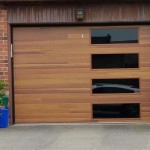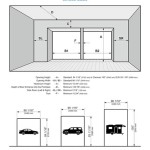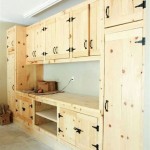Build a Home Gym in Your Garage: DIY Ideas for Fitness Freedom
Transforming a garage into a home gym is an increasingly popular project for individuals seeking a convenient and personalized fitness space. A garage offers a relatively large, often underutilized area that can be adapted to accommodate various exercise equipment and activities. This article outlines essential considerations and DIY ideas for building a functional and motivating home gym in a garage.
Planning is the initial critical phase. This stage involves assessing the available space, defining fitness goals, and determining the budget. The dimensions of the garage dictate the type and quantity of equipment that can be accommodated. Fitness goals will influence the selection of equipment; for instance, a weightlifting focus necessitates a power rack and weights, while a cardio emphasis may require a treadmill or elliptical machine. Establishing a budget is essential for managing expenses and prioritizing equipment purchases.
Space Assessment and Layout Design
Accurate measurement of the garage space is paramount. This includes length, width, and height, paying particular attention to any obstructions like support beams or low-hanging fixtures. Once the dimensions are known, a floor plan can be created. This plan should designate areas for different types of exercises and equipment. Consider leaving ample space around equipment for safe movement and ease of use. Digital tools or even simple sketches can aid in visualizing the layout and optimizing space utilization.
Consider the garage door’s operation. Ensure that equipment placement does not interfere with the door's opening and closing mechanism. If feasible, explore options for modifying the garage door, such as replacing it with a roll-up door, to maximize usable space. Furthermore, assess the walls for potential storage solutions. Shelving, pegboards, and wall-mounted racks can help organize equipment and free up floor space.
Adequate ventilation is crucial for a home gym environment. Garages often lack proper airflow, which can lead to stuffiness and discomfort during workouts. Consider installing an exhaust fan or opening windows and doors to improve ventilation. A dehumidifier may also be necessary in humid climates to prevent moisture buildup and equipment damage.
Flooring, Walls, and Lighting Considerations
Garage floors are typically concrete, which can be cold and uncomfortable for exercising. Moreover, dropping weights on concrete can cause damage to both the floor and the equipment. Installing appropriate flooring is essential for protecting the floor, providing cushioning, and enhancing the overall gym environment. Popular flooring options include rubber mats, interlocking foam tiles, and rolled rubber flooring. Rubber mats are durable and provide excellent shock absorption, making them ideal for weightlifting areas. Foam tiles are a more affordable option but may not be as durable as rubber. Rolled rubber flooring offers a seamless and professional look.
The garage walls can be improved aesthetically and functionally. Painting the walls with a light-colored, moisture-resistant paint can brighten the space and make it more appealing. Consider adding mirrors to create the illusion of a larger space and allow for proper form assessment during exercises. Additionally, padded walls can provide safety and sound dampening, especially in areas where heavy weights are being used.
Proper lighting is essential for creating a safe and motivating workout environment. Garages often have inadequate lighting, which can make it difficult to see properly and create a gloomy atmosphere. Consider installing additional lighting fixtures to brighten the space. LED lights are energy-efficient and provide bright, consistent illumination. Positioning lights strategically can minimize shadows and ensure adequate visibility throughout the gym. Task lighting, such as spotlights, can be used to highlight specific areas or equipment.
Equipment Selection and Procurement
Equipment selection is dependent on the user's fitness goals. Weightlifting enthusiasts will require a power rack, barbell, weights, and weight bench. Cardio equipment options include treadmills, elliptical machines, stationary bikes, and rowing machines. Consider the space limitations and budget when selecting equipment. Multi-functional equipment, such as a cable machine or a functional trainer, can offer a variety of exercise options in a compact footprint.
New equipment can be expensive. Consider purchasing used equipment to save money. Online marketplaces, local classifieds, and used sporting goods stores are good sources for finding used equipment. Inspect used equipment carefully before purchasing to ensure it is in good working condition. Check for rust, damage, and missing parts. Negotiate the price if necessary.
DIY equipment projects can further reduce costs and add a personal touch to the home gym. Building a plyometric box, dip bars, or a weight plate storage rack can be relatively simple and affordable. Online resources provide instructions and plans for various DIY gym equipment projects. Ensure that DIY equipment is built safely and securely to prevent injuries.
Storage solutions are crucial for keeping the gym organized and clutter-free. Weight plate racks, dumbbell racks, and barbell storage solutions can help keep equipment organized and prevent tripping hazards. Wall-mounted shelves and pegboards can be used to store smaller items such as resistance bands, jump ropes, and foam rollers. A designated storage area for cleaning supplies can help maintain the cleanliness of the gym.
Safety and Environmental Factors
Safety is paramount in a home gym environment. Ensure that the equipment is properly assembled and maintained. Regularly inspect equipment for signs of wear and tear and replace or repair damaged parts. Provide adequate space around equipment to prevent collisions and injuries. A first-aid kit should be readily accessible.
Temperature control is important for comfort and performance. Garages can become very hot in the summer and very cold in the winter. Consider installing a heating and cooling system to maintain a comfortable temperature. A portable air conditioner or space heater can provide supplemental heating or cooling as needed. Insulating the garage can also help regulate the temperature.
Soundproofing the garage can minimize noise disturbance to neighbors and other household members. Soundproofing materials can be applied to the walls, ceiling, and door to reduce noise transmission. Rubber flooring can also help dampen sound. Consider the time of day for workouts to minimize disruption to others.
Power Infrastructure and Data Connectivity
Evaluate the electrical capacity of the garage. Cardio equipment, in particular treadmills and elliptical machines, often require dedicated circuits. Ensure there are sufficient outlets to accommodate all equipment without overloading the circuit. Consider hiring a qualified electrician to install additional outlets or upgrade the electrical panel if necessary. Proper grounding is crucial for safety.
Assess the availability of internet connectivity within the garage. Many individuals utilize online workout programs or streaming services during their exercise routines. If the Wi-Fi signal is weak, consider installing a Wi-Fi extender or running an Ethernet cable to the garage for a more reliable connection. A dedicated tablet or screen can be mounted on the wall to display workout videos.
The addition of entertainment options can enhance the workout experience. A television or sound system can provide motivation and distraction during workouts. Consider installing speakers and mounting a television on the wall. Noise-canceling headphones can be used to minimize distractions and focus on the workout.
Budgeting and Phased Implementation
Creating a detailed budget is essential for managing expenses and prioritizing purchases. Identify the essential equipment and prioritize those items first. Purchasing used equipment can significantly reduce costs. Consider DIY projects to further minimize expenses. Track expenses carefully to stay within the budget.
Implementing the project in phases can make it more manageable. Start with the essential flooring, lighting, and ventilation improvements. Then, purchase the essential equipment. Gradually add additional equipment and features as the budget allows. This phased approach can spread out the costs over time.
Thorough research and planning are key to a successful garage gym conversion. Consult online resources, read reviews, and seek advice from experienced individuals. Carefully consider the space limitations, budget, and fitness goals. With proper planning and execution, a garage can be transformed into a functional and motivating home gym.

Creative Diy Garage Gym Ideas To Maximize Your Space Trusscore

I Built My Dream Garage Home Gym

Our New Home Gym Separate Building In Backyard Nesting With Grace

How To Turn Your Garage Into A Fitness Room

Home Gym In The Garage Bunnings Work Community

Creative Diy Garage Gym Ideas To Maximize Your Space Trusscore

How To Turn Your Garage Into A Fitness Room

How To Build A 500 Home Gym On

The Ultimate Guide To Building A Budget Home Gym 2024

Organized Basement Home Gym Ideas Abby Organizes
Related Posts








